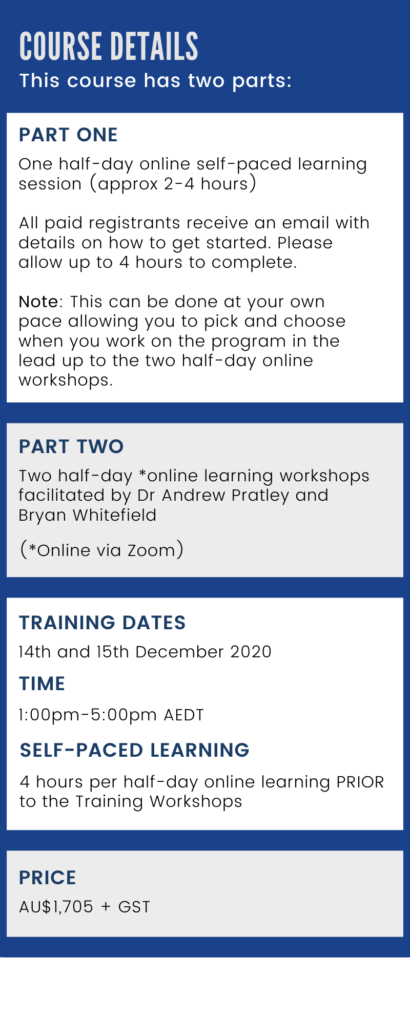Dr Andrew Pratley of the University of Sydney Business School knows differently. He knows how to improve estimates to improve decision making in everyday business “using your data, not big data”.
With a unique blend of Andrew’s statistical skills and Bryan as a translator for the risk profession, Bryan and Andrew have teamed up to defeat quantifornication. Together they will impart to you how to transform the risk matrix using the iQ3 framework. A framework that applies the three critical questions answered by statistics to the field of risk:
- Questions of Probability – e.g. what is the likelihood?
- Questions of Differences – e.g. how do these controls compare?
- Questions of Relationships – e.g. what is the relationship between this cause and consequence?
The risk matrix has been instrumental in transforming conversations about risk. However, its increasing misuse means the time is now to transform the risk matrix into the powerful tool it was originally designed to be.
Format of the Course
1. Half Day Online Self-Paced Learning
Overview of statistics for non-statisticians
- How probability works in statistics
- How statistics help us to interpret and make decisions under uncertainty
Overview of key probability distributions and their application in risk
Overview of key statistical tests for comparing one or more variables and their application in risk
Overview of regression and its application and interpretation in risk
2. Two Half Day Online Learning Workshops
- Clarify and create a competency in applying statistical methods to risk
- Discover and apply the iQ3 Framework for applied statistics in risk
- Questions of Probability – e.g. what is the likelihood?
- Questions of Differences – e.g. how do these controls compare?
- Questions of Relationships – e.g. what is the relationship between this cause and consequence?
- Gain experience with a quick reference guide for applying statistical methods in the field of risk management
Learning Objectives
- Understand how to deepen risk expertise through the use of applied statistics.
- Develop critical thinking and problem-solving skills through the use of statistical hypotheses.
- Improve influencing skills through the use of applied statistics to inform decision makers.
[span12]


